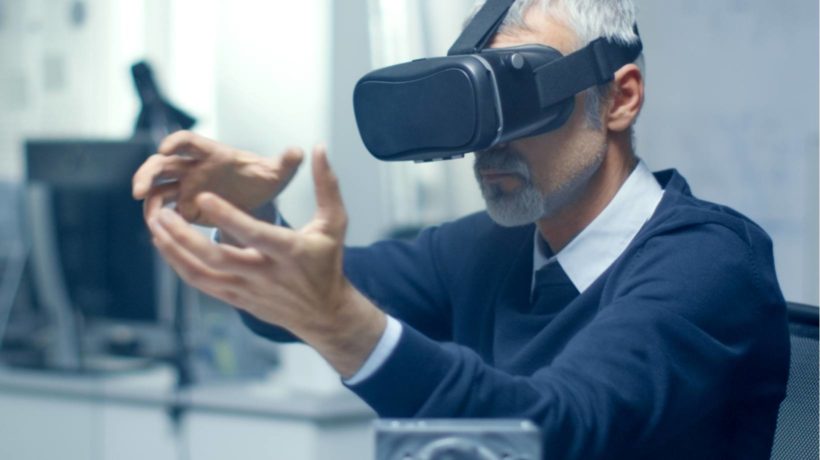Top 5 eLearning Trends 2019 You Should Be Aware Of
The Gurus, known and unknown, are intently gazing into their crystal balls and making interesting predictions. While these articles are certainly very informative and talk enthusiastically about frontier learning technologies and practices, we see things a little differently. From the Trenches talks about what’s actually happening in the minds and pockets of L&D managers across the world, the shifting priorities and changing paradigms in corporate training. Changes that we have been seeing and have been a part of for the last 18 years. During the last year itself, we have worked with 74 companies, across 25 countries, producing 850 courses in 7 (product & sales, compliance, process, safety, new employee orientation, and leadership) subjects.
Here are the 5 trends we see that are here to stay.
1. The Berlin Wall Is Crumbling! (In Other Words, ILT & eLearning Are Merging)
When eLearning started around the year 2000, we talked about it as a disparate entity and a new kid on the block that had nothing in common with classroom or ILT. We treated it and used it as such. We placed ILT and eLearning neatly in parallel silos. Today that is no longer the case. The walls of demarcation have more or less crumbled. Today is the era of “blended” learning, where L&D managers are using learning technology and learning practices in new and creative ways; smart classrooms, eLearning, microlearning, mobile learning, Just-In-Time learning, performance support, digital learning assets are the new lexicon. We really cannot differentiate among them and certainly cannot use them in isolation.
Why is this amalgamation or should we say, consolidation happening? It is mainly because of three reasons: The unprecedented proliferation and use of mobile devices, substantial increase of “Millennials” in the workforce composition, and the rapid, never-ending globalization of businesses and its concomitant demands arising from changing customer preferences, technology, and competition. The new mantra is now “technology-enhanced learning” that encompasses all the avatars learning technology mutations that are already in existence, and you can be sure that there are many more to come.
2. The Fall Of Instructional Design! (At Least, How We Have Known It)
OK, OK, I am being a bit dramatic. What I mean is Instructional Design, as we have known it, is going the “minimalistic” way. In other words, ID is now all about clarity, purpose, and intentionality, adopting all that is valuable for promoting learning and eschewing everything else which doesn't. During the early years of euphoria, Instructional Design was extravagant, to say the least, with costly media elements, unnecessary graphics and animations, and with a propensity to “show off” the “Taj Mahals” of eLearning. Training Managers went for it, just of the novelty of it. As the years went by, and as eLearning proved its mettle, its rate of adoption moved from the innovation into the growth and maturity stages.
Now, the L&D fraternity is quickly scaling up its eLearning to address the training needs of more and more of their employees and is including more and more subjects of their business. They are no longer impressed with the bells and whistles of eLearning design. They, of course, want the fundamental ISD design principles to be strictly adhered to (performance-based learning objectives, formative & summative assessments, and adequate levels of interaction and engagement -1 interaction for every 3-4 screens), but with none of its unnecessary, costly and time-consuming animations, graphics, branching logics and so on, if they do not substantially improve the learning efficacy.
With this attitude to contend with, learning designers are going “lean, mean, and rapid” so that courses can be developed quickly at a reasonable cost and time and at the same time, deliver good learning. With this trend of “minimalistic” Instructional and Graphic Design, the cost and time are coming down; thereby adoption among stakeholders is rising fast and furious. To put it simply, eLearning design is becoming utilitarian and effective, and most importantly, affordable with “rapid” eLearning design.
3. The Approaching Criticality Of TNI (Exactly What It Means!)
With ID strategies going minimalistic, the adoption of eLearning as a training methodology skyrocketing, and with stakeholders aggressively demanding proof of Return On Investments, it has become imperative for L&D managers to take the alignment of training needs to business goals very seriously as also the urgency of identifying the most pressing training needs accurately and quickly. They have accepted, in some cases welcomed, this trend because it serves them, and all concerned (learners and stakeholders) very well. This is how: If enough effort and seriousness is invested in aligning business goals with training needs, the ensuing training and learning interventions will deliver the most impact as far as business results are concerned. This means happy stakeholders, increasing training budgets, and happy training managers.
On the other side of the spectrum, learners are most motivated to learn when they see the training that is served to them will really help them perform their jobs easier, better, and with less effort. If that is so, they don't really need cajoling with “highly engaging”, “highly interactive”, or “entertaining” training programs. If they are convinced of the training’s relevance to their jobs, they will line up for more. So, the trend here is not to rely too much on the training needs identified in performance appraisal forms but to seek more real-time identification methods through learning technology and more accurate alignment of training needs through cleverly translating business KPAs and metrics into their corresponding training needs. A customer of ours uses data from a SalesForce-like application to identify the training needs of his sales professionals in real-time that are directly linked to his business results – sales.
4. A Teaching LMS? (You Better Believe It!)
For many years, L&D professionals and HR focused on Learning Management Systems as platforms to host eLearning courses and to administer training programs, be it classroom or eLearning. However, the conventional LMS no longer looks the way it did nor does it just host and administer training. The monolithic, nightmare-to-users, heartburn-to-bean-counters ugly duckling LMSs have turned into learner-centric graceful swans. The entire focus moved from the techies, who designed those Dinosaurs-like LMSs for their own pleasure and forced them onto the learners/users. Now, more power to the learner and her boss, the functional head and the L&D manager. The present-day LMS actually takes an active part in enhancing learning among its users (learners). How’s that?
LMS's now are so designed that they not only host all types of technology-enhanced learning programs such as eLearning, mobile learning, microlearning and so on, but also encourage friendly competition among trainees via leadership boards, recognize completions with badges, accommodate learning assets and resources in learning repositories, map out customized learning paths to suit unique requirements, and track learner progress to furnish meticulous learning analytics.
Not only that but the L&D manager today doesn't shy away from jettisoning an expensive relic without any qualms, any number times nor is she averse to having more than one LMS if it serves her purpose. There is also a growing trend of using open-source LMSs, especially MOODLE for its features, flexibility, cost and the fact that the code is free and for keeps. The lines separating content and an LMS may also soon fade, methinks.
5. The Rise Of The Planet Of The … Learning Analytics!
The old saying, “Half the money I spend on advertising is wasted; the trouble is I don't know which half” rings painfully familiar in the ears of functional and L&D managers when training is concerned. Everyone readily used to agree that training is good in parts, but none could demonstrate which were the good parts and which weren’t. The increasing sophistication of technology and its rising affordability is ringing the death knell for such vague axioms. Stakeholders have had enough of indulging in unaccountable training budgets. They are now demanding that it is high time the breath of practicability was breathed into Kirkpatrick’s 4-step model of the 1950s. There is renewed interest in evaluating the effectiveness of training at all levels of its impact – reaction, learning, behavior, business results, and right up to calculating its ROI like any other business investment/expense.
Organizations and L&D managers are now realizing that they need to set up systems and processes to capture data at every level if they wish to accurately calculate the ROI of their training in totality or of a specific program or to project the ROI of a training program in the planning stage. Organizations are taking Jack Phillips’ help here. Jack’s work in this area is valuable as it demonstrates that each of the 4 levels of evaluation is an essential link of a single chain that would eventually deliver the magic number of ROI. This trend is slowly but steadily catching up and “Learning Analytics”, the building blocks of the 5 levels of evaluation will finally bring the Kirkpatrick framework to life in a big way, maybe for the first time!
Parthian Shots…
These then are the trends according to us. But then, you may protest, “What about AR/ VR?” or “AI/Machine Learning?”.
Well! Augmented Reality (AR), and Virtual Reality (VR) are making a lot of noise, for sure, just like mobile learning did ten years ago. It took mobile learning ten years to become a recognizable practice, just about now. Yes, maybe these technologies will shift paradigms, but we wouldn't venture such predictions now, even if Apple CEO, Tim Cook proclaimed his preference to Augmented Reality as against VR and thinks it's the greatest thing after sliced bread [1]. VR’s uptake, on the other hand, seems slower than AR. Artificial Intelligence and Machine Learning? Not a squeak about them in our trenches. Sorry!
References:
[1] Apple's Tim Cook prefers augmented reality to VR










